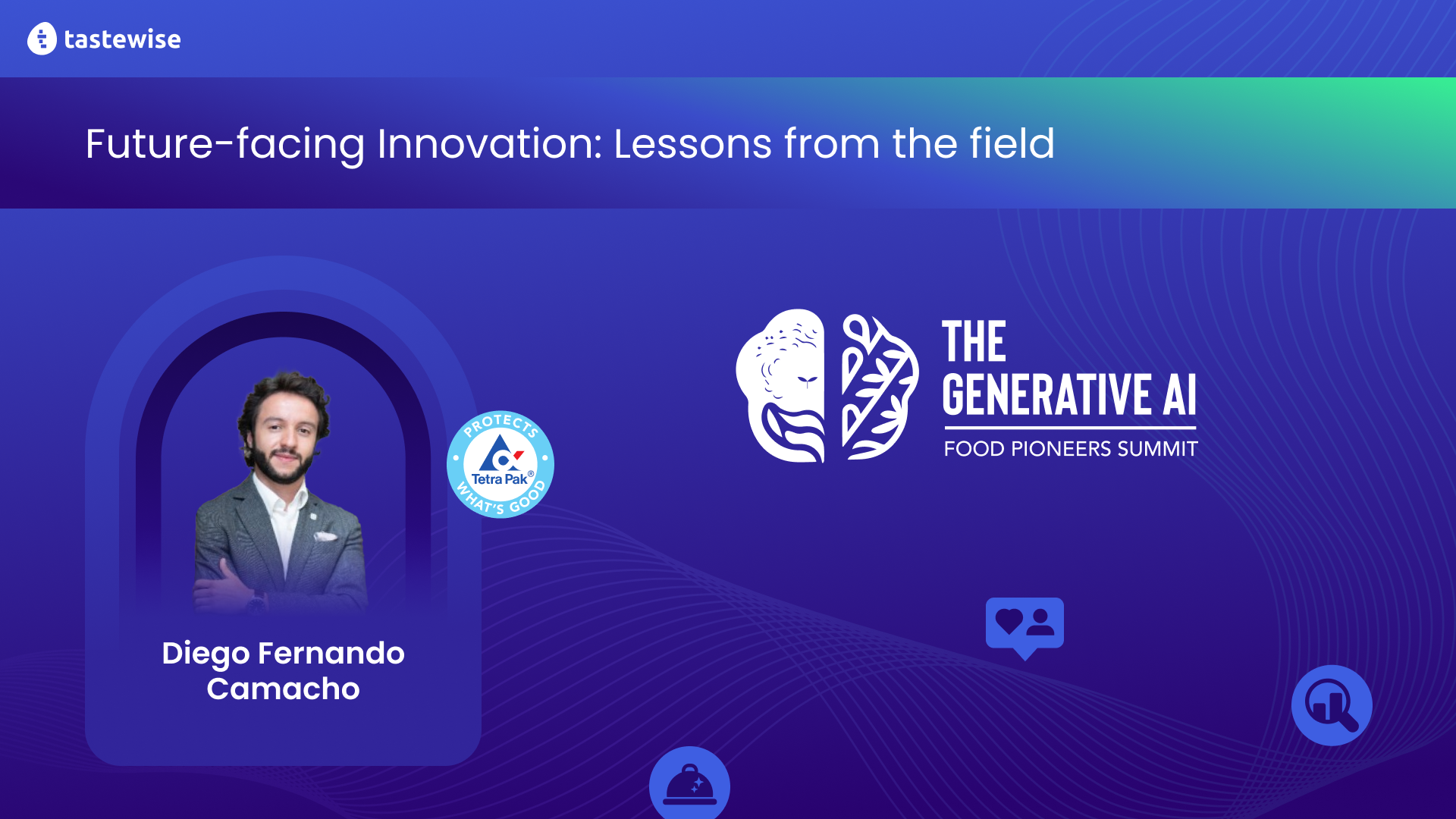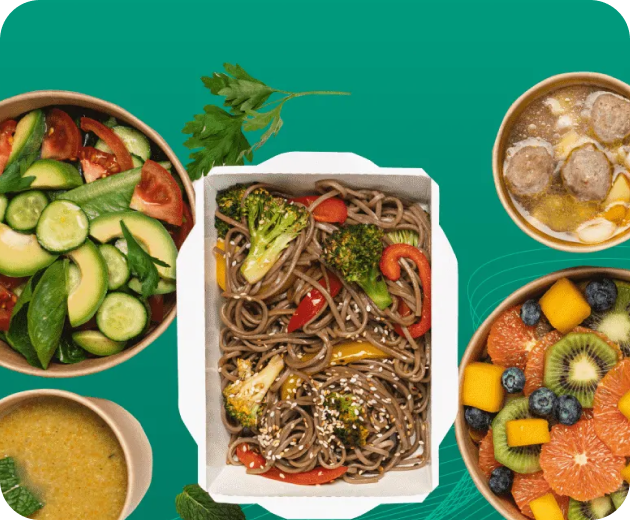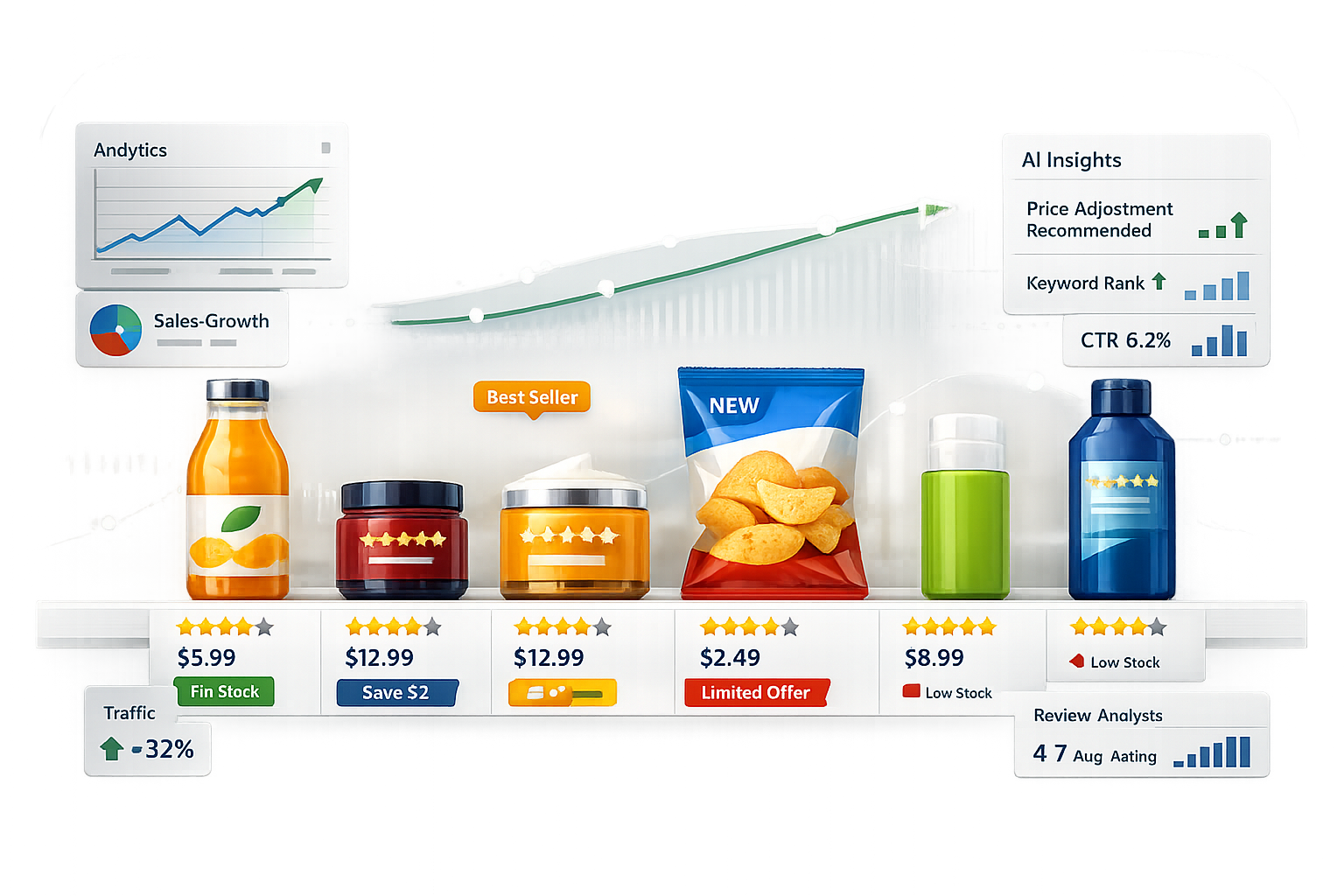Future-facing Innovation: Lessons from the field

Speaker: Diego Camacho
Diego Camacho, Tetra Pak, will share innovation lessons learned from Homer Simpson, emphasizing the importance of not following trends blindly but leveraging technology thoughtfully. He will discuss the role of GenAI in the food and beverage industry, highlighting its potential to transform product development, consumer engagement, and market strategies.
[00: 50: 00]
Diego Camacho: Hey, everybody, I just want to share with you the innovation lessons that I’ve learned from Homer Simpson.
[00:01:00]
Diego Camacho: I am Diego Camacho, and I’m currently leading the Innovation and Product Development Center at Tetra Pak in Dallas in Texas. And here —
[00:02:00]
Diego Camacho: We co-create the future of food and beverage with the manufacturers or brand owners of these brands you all know. I have a bachelor’s degree from Los Angeles University School of Business in Bogota in Colombia. In over 13 years I have created and implemented strategies in the areas of innovation, B2B, digital transformation, and advertising for mostly well-known multinational food and beverage corporations. I believe we can learn several things from Homer Simpson, in terms of innovation. In this particular episode of “The Wizard of Evergreen Terrace”, Homer becomes an inventor, setting up shop in his garage to create values gadgets, including “Everything’s Okay Alarm”,
[00:03:00]
Diego Camacho: And a makeup shotgun. Inspired by Thomas Alva Edison’s Genie, Homer, eager to innovate. Unfortunately, eagerness is not enough. He spends most of his time thinking of what to invent, and afterwards building prototypes of unnecessary solutions that don’t fill actual needs. Just like Homer inventing products with no clear intent, marketers are often obliged to use technology in order to make their brand cool solving no consumer need with it. In the past 15 years, we have seen a surge in digital tools like social media, YouTube channel, QR codes, augmented reality, and now GenAI. Brands and —
[00:04:00]
Diego Camacho: Agencies are rushing to embrace each of these innovations, but often without a clear strategy. It is tempting to jump on every trend, but we must remember, these tools are meant to convey messages and serve specific purposes. Simply being present isn’t enough. We need to assure that digital endeavor aligns with our brand’s objectives and enhances our communication efforts. Let’s prioritize substance over trends and use these tools thoughtfully to create meaningful connections with our audience. This should not be the art for art’s sake. The tools for innovation sake is not enough. It’s about leveraging technology to —
[00:05:00]
Diego Camacho: Deliver real value and impact. But why do we need AI in food and beverage, or more specifically, generative AI in food and beverage marketing; because it’s cool, because it’s trendy, because we want to win awards or advertising trophies, or to bring growth, revenue, or to add value to customers and consumers? It is crazy to suggest that benchmarking might actually hinder our innovation gains. For decades it’s been a cornerstone of our approach, especially in fast-moving consumer goods. But let’s pause and reflect. Can we truly start a category revolution by merely benchmarking against products already —
[00:6:00]
Diego Camacho: On the shelves? Innovation thrives on pushing boundaries, not following footsteps. To truly seize the benefits of being first to market we must become trend predictors, not trend followers. Let’s capture those early signals, those fleeting glimpses of what’s to come, and translate them into groundbreaking products and experiences. Innovation often brings to mind Henry Ford’s classic quote about faster horses. But beyond the cliché lies a profound truth. True innovation isn’t about small improvements, it’s about revolutionizing entire industries. Innovation isn’t about playing catch-up,
[00:7:00]
Diego Camacho: It’s about setting the pace. If you benchmark on whatever is already trending or hitting the shelves somewhere, it’s unlikely that the inspiration will bring radical innovation. So let’s break free from the constraints of benchmarking and embrace the thrill of pioneering new paths. For my fellow food and beverage marketers and innovators, let’s lead the charge into uncharted territories of creativity and disruption with the help of new digital tools and tech partners. Innovation thrives at the intersection of new consumer needs and their emerging technology. Game changers will ensure your product portfolio’s future relevance in the market. I don’t remember the last time our industry —
[00:8:00]
Diego Camacho: Was struck by a game-changer. Seems like the applications of AI in every step of the value chain will be how to disrupt your category. To tackle such a challenge, I suggest using innovation methodologies. In this particular case, I would suggest the three-boxing solution. It’s mainly keeping the core of the business intact. That’s our foundation where you will get the funds to innovate. Ditch what’s no longer relevant on the consumer or on the market-wide side. Evolve with the times, maintaining the culture and the values that brought your company or your team here.
[00:9:00]
Diego Camacho: One of the most pressing challenges we face in our industry is the significant duration it takes to bring products to market. From initial ideation to consumer validation, and then regulatory compliance, each step in the process demands attention and time and less iterations, time, and resources to achieve the perfect formula, the most appealing, the perfect tone for communication, and then just do it all over again. It’s no secret that some industry giants invest up to three years in this process. However, we believe there are more efficient ways to navigate this path without sacrificing quality or compliance.
[00:10:00]
Diego Camacho: At Tetra Pak, we are all about innovation. Our mission is to bring food and beverage manufacturers together on lightning-fast innovation journeys. Our goal is crystal clear, to incubate ideas at warped speed to reshape the future of food and beverage. To do so, we have developed the alpha model. It’s based on this thinking in startup and some other innovation methodologies with experimentation in speed to market as a guiding principle. We have implemented some tools to slash a three-year development stage gate to the minimum, all throughout the innovation journey. It is growing —
[00:11:00]
Diego Camacho: More and more in cross-functional themes across the globe. Unfortunately, as we have some nondisclosure agreement with our customers, I’m not allowed to show you some specific real examples of how we have been implementing these tools. But I can assure you that you may have faced a product on the shelf that has been co-created by our teams in the brand somewhere using them. Innovation is about de-risking, and that’s where lean startup meets traditional methods. We are calling stage gates from three years to the minimum. We have large food and beverage corporations as customers, and of course they have got checkmarks to meet. We are checking them off with fewer —
[00:12:00]
Diego Camacho: Resources. The guiding principle to do it is by using the test, learn, iterate loop, focusing on learning fast and cheap. If the concept is to fail, it is better knowing it before spending a couple million dollars on it. Test your ideas, learn from the results, and then iterate to improve. This cycle of continuous improvement is the driving force behind successful innovation. It is not just a process, it’s a mindset. As a good example of how things used to be, let’s remember how we used to validate consumer purchase intent through traditional research techniques and the traditional suppliers; exactly the same way TV consumer —
[00:13:00]
Diego Camacho: Surveys were done. The TV audience members — all, they all claimed a desire for more cultural programs. But the reality was, we all know it, it was that top TV ratings were always for reality shows. How many times did we launch a new product that was validated through purchasing then surveys with really good results, and then when we launched them, they died on the shelves? Imagine this, capturing consumer feedback before we even develop a concept. Thanks to GenAI, it is now possible by tapping into the vast open data on social media.
[00:14:00]
Diego Camacho: Picture it, genuine unaided responses and feelings from consumers, for example, has a marvelous tool that lets you survey consumers after they express themselves regarding a particular need or category. In this case, it is exactly what good innovation is often claimed to be, spending more time making the right questions and avoiding jumping into solutions. How does this look like in a practical exercise? Imagine you want to develop a new shake. What previously you would have thought of is taking the flavor and showing it to several target consumers. Most likely like TV ratings, they would all lack the concept and claim that they —
[00:15:00]
Diego Camacho: Would buy it. Nowadays with GenAI, we can use the thousands of posts on social media, take it as a database, and then ask the right questions as a prompt to predict what would be the next ice cream with fries unthought thing on the milkshake industry; or maybe being able to seize the opportunity of the next tomacco, just as Homer did. With these tools we’ve slashed the time spent analyzing data. Gone are the days of racking our brains to connect the dots. Now we can do it in seconds, freeing up more time to refine our offerings and seize untapped growth and development opportunities.
[00:16:00]
Diego Camacho: It’s that sweet spot between consumer needs, the category needs, the demand spaces, the attributes and functionality to offer to create something really appealing for consumers, to solve a consumer need. A little bit further down the road on the innovation journey, the prototyping process has evolved significantly. Previously — I mean, pre-GenAI, it involved multiple phases and resources. Now it’s streamlined. From idea to MVP ready for testing in one step, this eliminates subjectivity, ensuring our value ever remains strong through every AI iteration. So why would we —
[00:17:00]
Diego Camacho: Stick to AB testing? A, B, C, D, E, F or better, letters to complete testing; it offers a more comprehensive approach. By evaluating a multitude of variables simultaneously, it provides a broader scope for analysis. While AB testing may limit us to a narrow variable, letter soup testing allows us to explore a wider range of possibilities. This comprehensive testing approach enables us to uncover insights that may otherwise be overlooked, leading to more robust and well-rounded solutions. Having multiple prototypes to test is unliked by GenAI. It is cost-efficient, it is faster.
[00:18:00]
Diego Camacho: You may run experiments with all of them at the same time to test for smaller changes and then get optimal betas; optimal MVPs to launch and test. It’s been quite some time since beverage formulation process comes out of an accident. Great popular brands were born like that, just like Homer’s Flaming Moe drink. Today, the game is quite different. GenAI identifies trends in consumer preferences swiftly, enabling tailored formulations. Predictive modeling anticipates future trends, preferred ingredients, what are the claims to be highlighted, while simulations optimize flavor profiles, the formula’s cost, and —
[00:19:00]
Diego Camacho: This all will lead to reducing time to market. We have been using GenAI’s powerful tools for success in the competitive e-commerce landscape as well. The, let’s say, “go to market testing loop” uses AI data analysis for rapid product and marketing testing, ensuring optimized offerings. GenAI analyzes, for example, Amazon data to target specific consumer segments, boosting sales and engagement when you launch. AI generates optimized packaging prototypes, enhancing visibility and sales on digital marketplaces by showing you where’s that hotspot, what’s the image to change, what claim to make bigger —
[00:20:00]
Diego Camacho: Or smaller? Cartons were a game-changer in food packaging. The founder invented them by using research of all experiments to test interest in a new concept. Nowadays we simulate functionality without building the products through cost-effective testing before full development. Particularly in e-commerce, we now try digital shelves to validate consumer real purchase intent, iterating price, or multipack viables. It is not about what they claim to be willing to buy, it’s about what they are actually clicking and trying to buy, which product offers which prices, which multipacks are the most happening for them?
[00:21:00]
Diego Camacho: When utilizing GenAI for concept development, or for design campaigns, or formulations, you may encounter skepticism internally or externally. The primary claim you will receive is that most prototypes are way too inaccurate. And this is a natural reaction of deviating from the status quo. By facilitating rapid and cost-effective learning, GenAI helps to de-risk product innovation. It enables companies to experiment, learn, and adapt swiftly, leading to more successful outcomes. Of them all, Homer’s greatest innovation learning regards MVP building. It was a well-intentioned yet bumbling inventor. He creates a —
[00:22:00]
Diego Camacho: Car so ridiculous and impractical that it leads to the downfall to his brother, Herb’s, car company. Despite the initial faith in his creativity, the Homer Mobile proves to be catastrophically a failure. It bankrupts the company. This episode serves as a cautionary tale about the importance of balancing innovation. While creativity and experimentation are indeed essential, they must be temperate with practicality and market research. Homer’s misadventure reminds us that innovation without consideration of consumer needs can have disastrous consequences. GenAI opens the door for optimizing MVPs, iterating cost-effectively —
[00:23:00]
Diego Camacho: From the Homer Mobile to an SUV in a week. It is essential to understand that GenAI isn’t here to take our jobs away. Rather, it enhances our capabilities and amplifies our expertise. By collaborating with AI, we can streamline processes, boost productivity, and uncover new opportunities that were previously beyond reach. Proper prompting serves as a key to unlocking the full potential of AI systems. Imagine if Herb, Homer’s brother, used his car industry expertise to develop the Homer Mobile. Conceptually, it was brilliant, the type of car Americans really want, not the kind we tell them they want. In the ever-evolving —
[00:24:00]
Diego Camacho: Landscape of industries and digital integration, groundbreaking innovations have emerged, reshaping the way we create, we shop, and interact with products and services. So let’s spark a discussion. Please leave your ideas here. After all, digitalization is not a solo endeavor. It is a collaborative journey where every contribution counts, one innovative idea at a time. Thank you.




